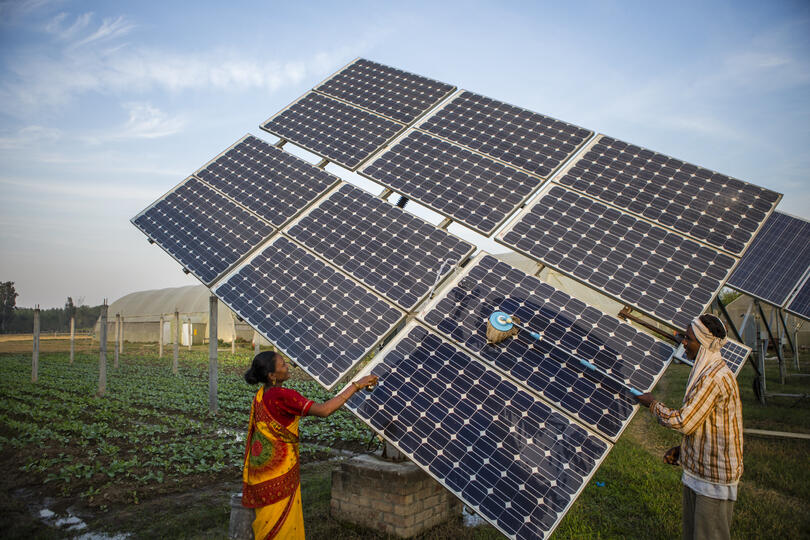India ranked third globally for total renewable power capacity additions in 2021 with 15.4 GW, behind only China (136 GW) and the US (43 GW). According to a report, despite the Covid-19 pandemic’s promise of a global green recovery, this historic opportunity has been lost. The world is unlikely to be able to achieve important climate goals this decade, according to REN21’s Renewables 2022 Global Status Report (GSR 2022). This is because the global clean energy transition is not taking place.
Buy Prime Test Series for all Banking, SSC, Insurance & other exams
Key Points:
- The largest energy crisis in modern history started in the second half of 2021, and it was made worse by the Russian Federation’s invasion of Ukraine in early 2022 and an unprecedented global commodities shock.
- The research states that India increased its hydroelectric capacity by 843 MW in 2021, bringing the total to 45.3 GW.
- India was the third-largest market globally and the second-largest market in Asia for new solar PV capacity (13 GW of additions in 2021).
- In terms of overall installations, it came in at number four (60.4 GW), passing Germany (59.2 GW) for the first time.
- India was in third place overall for installed wind power (40.1 GW), trailing only China, the US, and Germany.
- In the energy industry, historic increases in generation (7,793 terawatt hours) and capacity (314.5 gigawatts, up 17% from 2020) were unable to keep up with the six percent growth in global electricity demand.
About the Renewable Energy Sources:
- Renewable energy sources now account for 11.2% of the total energy used for heating and cooling, up from 8.9% in 2009.
- The lack of development is especially concerning in the transportation sector, which accounts for close to a third of worldwide energy consumption, where the renewable share increased from 2.4% in 2009 to 3.7% in 2019.
- A record 135 nations vowed to attain net zero greenhouse gas emissions by 2050 in the run-up to the United Nations Climate Change Conference (COP26), which will take place in November 2021.
- However, only 36 of these nations had targets for 100% renewable energy, and only 84 of these had targets for renewable energy across the entire economy.
- The COP26 declaration included reference to the need to limit coal usage for the first time in the history of UN climate summits, but it did not call for targeted cuts in either coal or fossil fuel consumption.
Effect on Economy:
- The robust economic recovery in 2021—with worldwide real gross domestic product (GDP) reaching 5.9%—contributed to a 4% increase in final energy consumption, balancing the growth of renewables—despite significant green recovery measures in many nations.
- Between 2009 and 2019, the ultimate energy consumption in China alone increased by 36%.
- Fossil fuels accounted for the majority of the growth in global energy consumption in 2021, which led to the biggest increase in carbon dioxide emissions in history—up more than 2 billion tonnes globally.
- The world economy is in danger from the breakdown of the previous energy order.
- With the biggest increase in energy prices since the 1973 oil crisis, 2021 also marked the end of the age of inexpensive fossil fuels.
Russia-Ukraine War Impact on the Renewable Energy:
- By the end of the year, gas prices had tripled in the US and reached levels that were roughly ten times higher than those of 2020 in Europe and Asia.
- This caused a rise in wholesale electricity prices in many major markets by the end of 2021.
- The ongoing energy problem was significantly exacerbated by Russia’s invasion of Ukraine, which also shook the more than 136 nations that depend on importing fossil fuels and caused an unprecedented commodity shockwave.
GSR Report:
Every year, the GSR assesses the global deployment of renewable energy.
- The GSR 2022 presents a globe map of renewable energy shares by country for the first time and emphasises development in some of the top nations.
- The GSR 2022 makes it abundantly obvious that significant efforts would be needed to achieve countries’ net zero commitments and that the impetus created by Covid-19 has already been exhausted.
The 2022 report, which was released and is the 17th iteration overall, confirms what experts have been warning about: the global shift of the energy system to renewables is not taking place, and the overall share of renewables in the world’s final energy consumption has stagnated, increasing only marginally from 10.6% in 2009 to 11.7 percent in 2019.



 Indian Olympic Medal Winners List Till N...
Indian Olympic Medal Winners List Till N...
 Who is the Inventor of the Gramophone?
Who is the Inventor of the Gramophone?
 HS Dhaliwal Appointed New DGP Of Andaman...
HS Dhaliwal Appointed New DGP Of Andaman...
